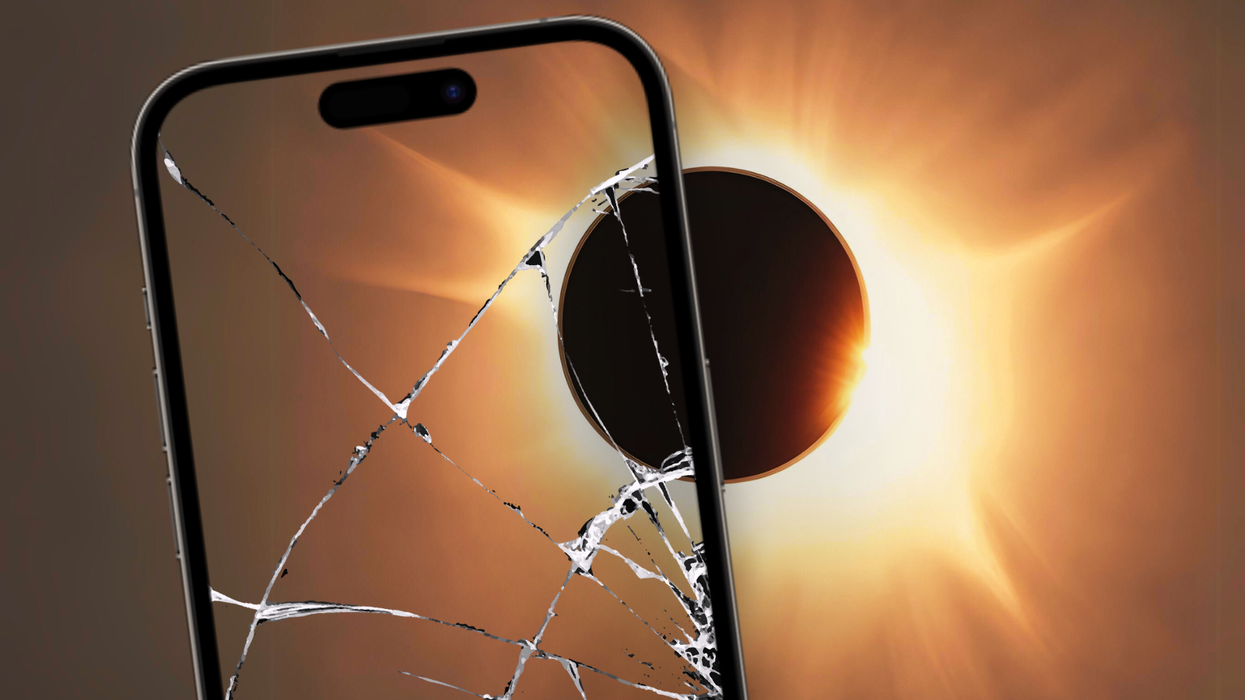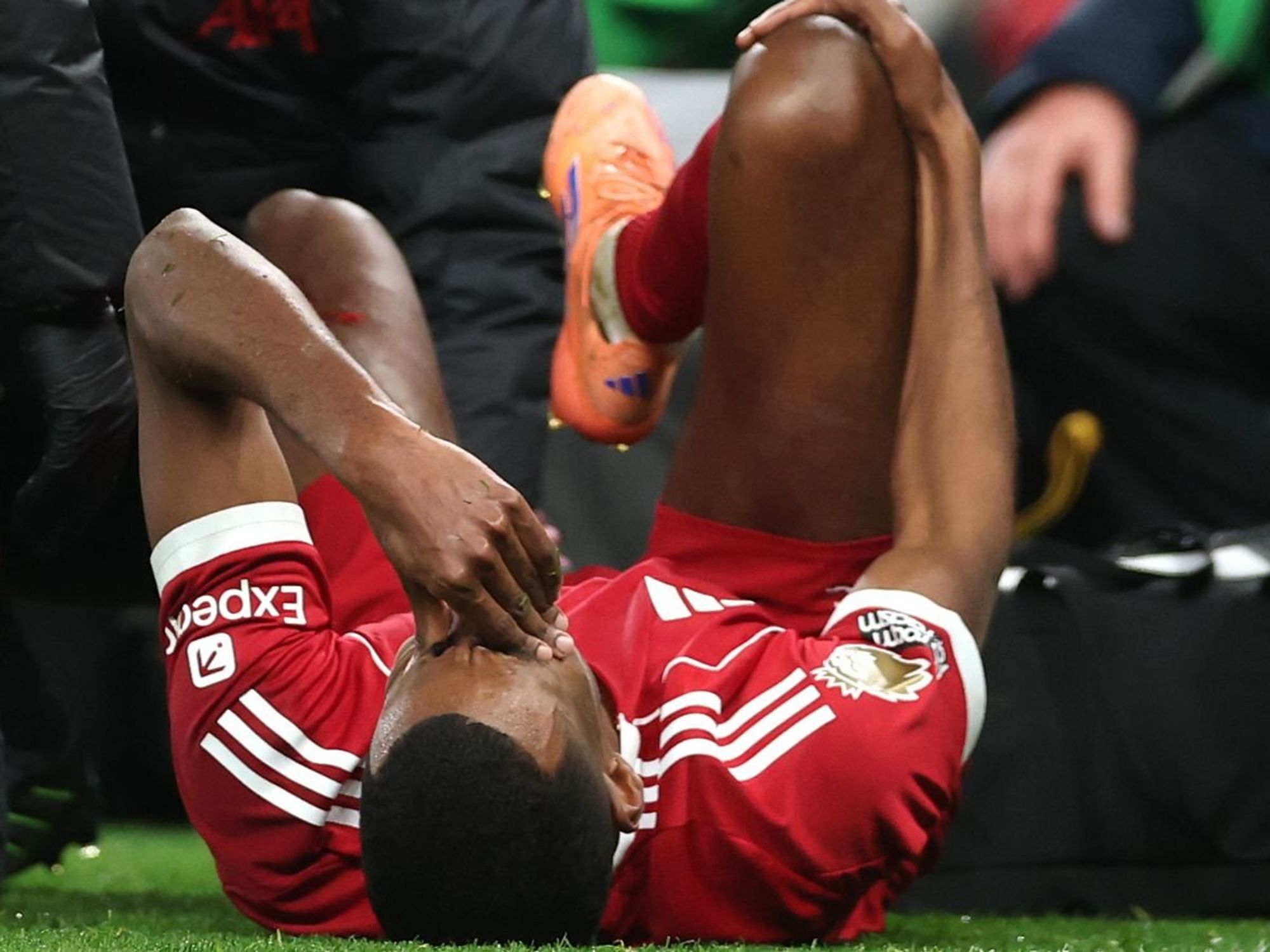Solar eclipse: NASA issues warning to millions, and ignoring it could BREAK your iPhone or Android phone

iPhone and Android users have been warned not to point their smartphone camera directly at the Sun during the total solar eclipse to avoid permanent damage to their device
|GETTY IMAGES | GBN

Looking through your smartphone will save your eyes ...but could permanently damage your camera
- Using your phone to watch the solar eclipse can damage the image sensor
- Direct sunlight will leave unsightly scars or spots on all future photos and videos
- The team behind the Google Pixel camera and NASA have issued a warning
- 32 million people across North America will see a total solar eclipse today
- But those living in the UK will only see a partial eclipse from 7pm
- You can watch the solar eclipse on YouTube here
Don't Miss
Most Read
Pointing your smartphone camera directly at the Sun could permanently damage the image sensor, NASA has warned millions across the UK, Europe, and North America hoping to catch a glimpse of the solar eclipse today.
We've all heard warnings not to look directly at the Sun as this can cause painful burns to your retina at the back of your eye that take months to heal or, in the worst cases, permanently burn a blind spot into your vision. But it turns out the same thing can happen to your smartphone camera, engineers at NASA have confirmed.
Watching the solar eclipse tonight through the screen on your iPhone, Samsung, Google Pixel, or other Android device might seem like a smart way to avoid the need for specialist solar eclipse glasses, which use a filter to block all damaging UV rays. These glasses are different from normal UV-protecting sunglasses since they block all light except that coming from the Sun.
We asked our @NASAHQPhoto team, and the answer is yes, the phone sensor could be damaged just like any other image sensor if it’s pointed directly at the Sun. This is especially true if you’re using any sort of magnifying lens attachment on the phone. You would need to utilize…
— NASA (@NASA) April 4, 2024
But without the right protection, NASA warns that pointing your camera directly at the Sun can inflict the same damage to the sensitive image sensor inside your device as the naked eye.
Although smartphones can cope with short snaps of the Sun — shooting into a sunrise or sunset as part of a larger image, for example — aiming the camera directly at the Sun for an extended amount of time risks catastrophic damage.
The US space agency posted a warning on X, formerly Twitter, ahead of the solar eclipse today: "We asked our @NASAHQPhoto team, and the answer is yes, the phone sensor could be damaged just like any other image sensor if it’s pointed directly at the Sun.
"This is especially true if you’re using any sort of magnifying lens attachment on the phone. You would need to utilize the proper filters just like on any other camera. The best practice would be to hold a pair of eclipse glasses in front of your phone’s lenses when photographing the Sun at any point other than totality."
The team behind the Google Pixel — a smartphone series known for its impressive photography features, including the ability to capture stars and planets in the night sky — has echoed the same warning as NASA. In a statement issued to the Los Angeles Times, the camera team warns: "We would not recommend pointing it directly at the sun for extended periods of time with no filter."
Using a longer exposure time or a magnifying lens can exponentially increase the risk of damage.
If the image sensor inside your smartphone is damaged, it will impact all future photographs and videos taken on your camera. Photos and videos shot with a damaged image sensor will usually exhibit bright spots or lines that cannot be erased.
These unsightly artefacts will correspond to the damaged portion of the sensor.
It's worth noting that watching the solar eclipse on your smartphone screen will protect your eyes since the LCD or OLED panel on your device cannot emit the brightness levels that will damage your retinas. However, the sensitive components inside your camera could be left in tatters by using this method.
Around 32 million people will be able to see a total solar eclipse today, where the Moon completely blocks the face of the sun from view for a few minutes.
The length of totality on April 8 will depend on where you're watching the solar eclipse, with some areas in North America peaking at four minutes and 27 seconds.
Where is the best place to watch the total solar eclipse?
The last time North America experienced a total solar eclipse was 2017, but after today, the next significant opportunity won't come around until 2045. While the UK is outside the path of totality, there will still be a good chance to witness a partial eclipse, where a smaller portion of the Sun is covered by the Moon.
Cities in the United States tipped to have the best view of the total eclipse include Dallas, Indianapolis, Cleveland and Buffalo. Those living in Hamilton, Montreal and Gander in Canada will be treated to the same views.
LATEST DEVELOPMENTS
When is the next total solar eclipse in the UK?
The last total solar eclipse was visible in the UK in 1999.
After tonight (April 8), the next partial solar eclipse that will be visible from mainland UK is projected to be on March 29, 2025 when a maximum of 40% of the Sun will be blocked out by the Moon. On August 12, 2026 scientists predict an almost total eclipse within roughly 90% blackout for the Sun.
But the next total eclipse visible in the UK — like millions will be able to see from across the United States today — won't take place until September 23, 2090, according to calculations from the Royal Observatory.










